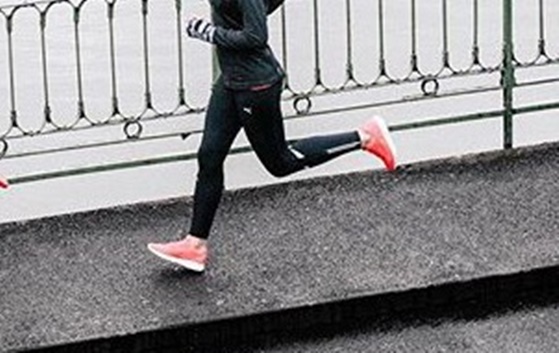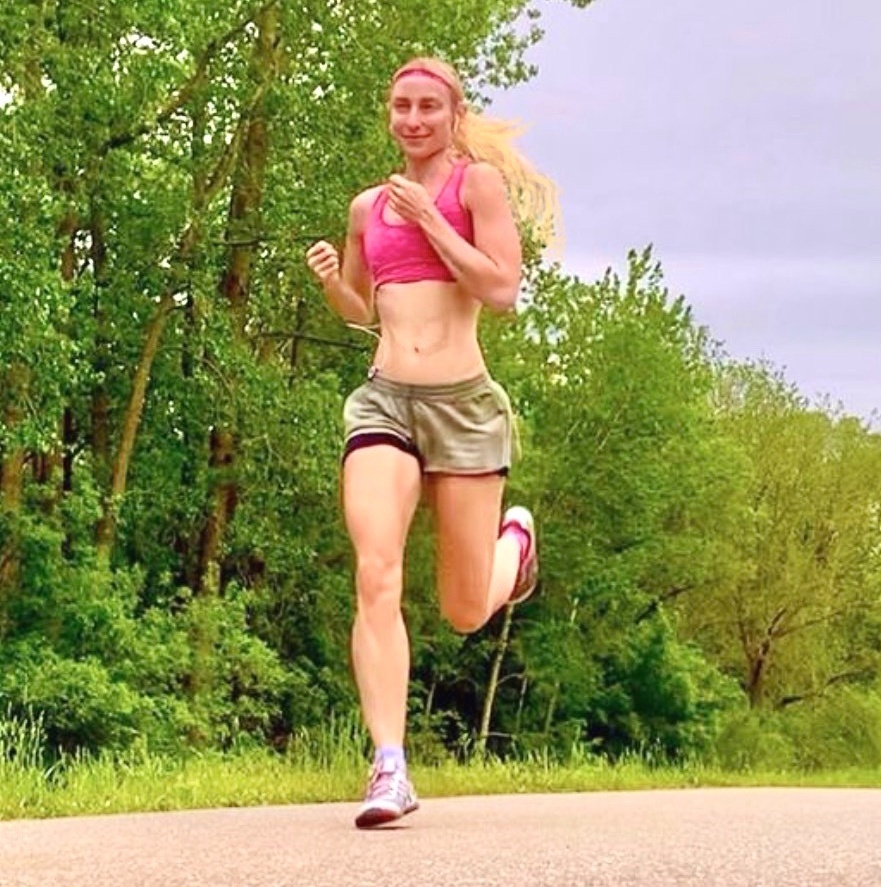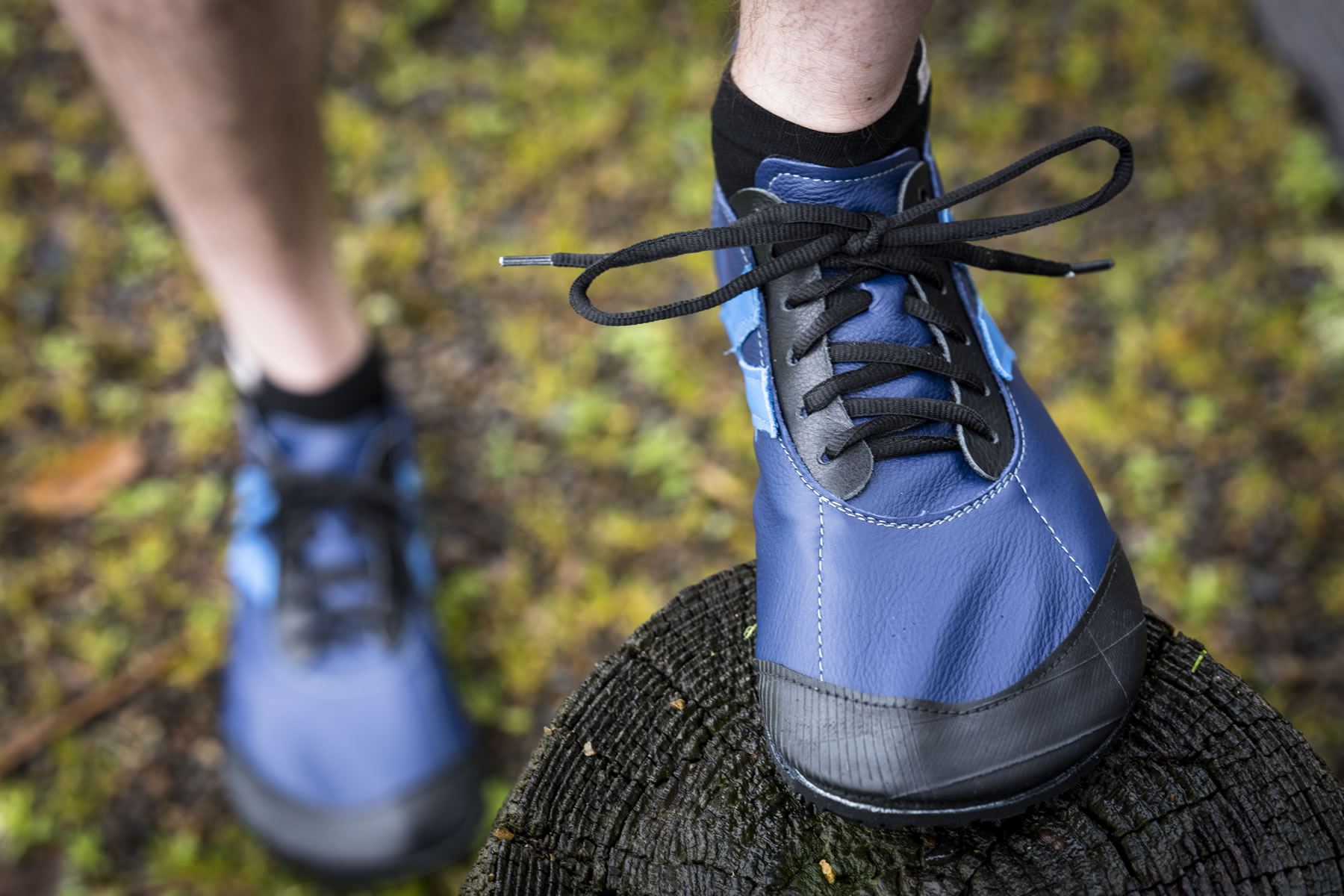Heel strike running is bad for the feet because it causes the foot to shift into extreme positions, known as over-pronation whereby many of the root causes of most running-related injuries are determined by how much a runner pronates.
- Pronation refers to the natural side-to-side motions of the back of the foot during the touchdown and stance phases of walking and running and is one of the body’s natural mechanical defenses that provides mechanical support and impact protection.
Therefore, pronation does have an important functional relevance for injury prevention. However, many factors can affect pronation during running, and foot strike pattern is one of them.

Too much pronation (also referred to as overpronation or hyper pronation) during running is a well-known risk factor for a long-list of injuries, including Achilles tendonosis, shin splints and runner’s knee. This is because when the foot hyper- pronates with the ground during running, the foot is essentially wrestling with the ground too intensively, shifting into extreme positions, leading to poor impact absorption, thereby amplifying impact up the leg.
Also, hyper-pronation during running increases footstep instability which has a profound ripple effect up the leg, resulting in greater torque, rotational stress and bending strain to reach a level of an injury on the Achilles tendon, shins and knees. From this, it’s easy to understand the list of things that can go when the foot hyper-pronates during running.
Interestingly, several studies specifically implicate that foot strike pattern strongly influences foot pronation during running whereby the foot undergoes a different pronation pattern in heel strike running than in forefoot strike running. That said, the differences in foot pronation between the two foot strike types yields more clues about an exact relation between foot strike pattern and injury in running. More simply, foot strike pattern does matter in running because of its direct involvement in injury via foot pronation.
In fact, running with a heel strike (shown above) over-stresses the foot and leg by pushing pronation out of a safer range as compared with forefoot strike running.
For example, some lines of research, which are listed below the article, discovered that during the stance phase (pronation phase) of heel strike running, the forefoot (the front of the foot) rapidly rotated outward away from the mid-line as the body-weight passed over the foot from heel-to-toe (shown below). This also caused the arch to fully collapse which forced the medial border of the foot (the inner border of the foot extending from the heel to the big toe) to absorb excessive levels of abnormal stress.
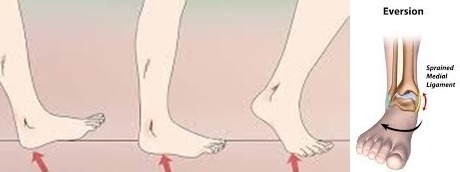
This excessive abnormal forefoot stress due to the arch collapsing too much during the stance phase in heel strike running also increases frictional forces on the foot. The cumulative effect of these physical stressors at the foot in heel strike running amplifies impact stress on the ankle and shin, increasing the risk medial shin splints.
One way to put a firmer hold on pronation during running is to land with a forefoot strike, shown below. For one, forefoot running prevents pronation from going wrong because reductions in ground-contact time of the foot is a natural compliment response of landing forefoot-first during running. In this way, there’s less time for pronatory mobility impairments to take hold.
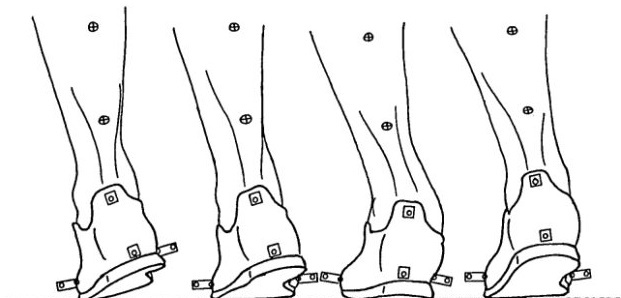

In contrast, heel strike running naturally results in prolonged ground-contact time, causing the foot to spend more time grappling with the ground, freeing up more time for abnormal foot postures and motions to occur.
Secondly, research has found that in forefoot running the medial aspect of the foot does not endure a rapid rise in abnormal loading during the pronation phase. This is because there’s less overall pronatory support demands required of the medial foot during the support phase in forefoot running.
In other words, less foot pronatory effort is needed for stability and impact attenuation because the mechanical components of forefoot striking when running results in an interaction of the foot with the ground that is so brief that certain forms of impact forces and mechanical entanglements are not fully produced like they are in heel strike running.
This is why the lower leg is less prone to overuse and overloading in forefoot running, making it easier to avoid lower leg injuries, like medial shins splints than in heel strike running.
This kind of data also makes it more clear that since foot strike pattern affects the way the foot pronates and therefore affects the way the foot contributes to impact absorption and mechanical stability during running, strengthens the association between foot strike pattern and injury.
Last but not least, adequate pronatory control is just one of the many ways the mechanics of forefoot running reduces injury as compared with heel strike running. In fact, here are other ways forefoot running does a better job at reducing and preventing injuries than heel strike running.
If you’ve enjoyed this article, you’ll love my content over at my YouTube channel, here, where I discuss more about the benefits of forefoot running and the health harming effects of heel strike running.

References:
DeLacerda, F. A Study of Anatomical Factors Involved in Shin Splints. J Ortho Sports Phy Ther, 1980; 2(2):55-59.
Lutter LD: Medical news: padded shoes put runners back on the track. J Am Med Assoc 239:1840. 1978
Rasch PJ, Burke RK: Kinesiology and Applied Anatomy. Ed 5, pp 378. 397. 404, 493-497. Philadelphia: Lea 8. Febiger. 1973.
If you’d like, you can support Run Forefoot and help keep it going by making a donation in any amount of your choosing:

Or, you can also support Run Forefoot by shopping at the following top minimalist shoes brands, and be sure to bookmark the links:
Be Lenka: https://www.dpbolvw.net/click-7600968-14330828
FeelGrounds: https://www.feelgrounds.com/?p=RunForefoot
Xero Shoes: https://xeroshoes.com/go/Run_Forefoot
Iguaneye: https://www.iguaneye.com/?ref=8tfXVc92
Soft Star Shoes: https://shrsl.com/3mp1b
Wilding Shoes: https://bit.ly/3lIygQP
Earth Runners: https://earthrunners.com/?rfsn=6763579.f7f9c9
Vivobarefoot: https://shrsl.com/3kvih
Zappos: https://goo.gl/J1CeAd
Bretta Riches
BSc Neurobiology; MSc Biomechanics candidate, ultra minimalist runner & founder of RunForefoot. I was a heel striker, always injured. I was inspired by the great Tirunesh Dibaba to try forefoot running. Now, I'm injury free. This is why I launched Run Forefoot, to advocate the health & performance benefits of forefoot running and to raise awareness on the dangers of heel striking, because the world needs to know.
Latest posts by Bretta Riches (see all)
- Can You Run In Barefoot Shoes? Yes, But DON’T Heel Strike! - 21/07/2024
- Why Cushioned Running Shoes Are Really Bad for Your Feet - 19/07/2024
- Do Cushioned Running Shoes Cause Injuries? - 17/07/2024

